Auschwitz—Reality versus the Claims
January 27, 2018
By Peter Winter
The Treatment of Inmates at Auschwitz
The image of Auschwitz, as promoted by the lying jews and their shabbos goyim in the jewish mass media, is that Auschwitz was a slave-extermination camp, dedicated only to murdering as many people as possible.
The reality of life in Auschwitz was—needless to say—very different to these endless jewish “survivor” lies. Instead of being dedicated to the “mass murder” of any-and everyone, the Auschwitz Camp had a large number of facilities dedicated to saving the lives of prisoners–including hospitals, dental clinics, recreational facilities, libraries, and so on. Here follows some images from Auschwitz which the holocaust storytellers do not show.
The Auschwitz Camp Orchestra
The story about the “Auschwitz camp orchestra” has entered nearly legendary status. Most often, the public is told, the evil evil NAZIS (either themselves, or they forced jews to do so) played classical music while they were mass-murdering jews in the “gas chambers” or some other such activity.
So what was the reality of the Auschwitz Orchestra?
The truth is revealed in original photographs, on display at the camp museum to this day.
Below: A picture of the real Auschwitz camp orchestra, assembled for an open air concert in Auschwitz I. Note the crowds of prisoners standing round (not being “marched” or “carrying the dead” but quite relaxed, listening to some music. Note other prisoners on the left, standing at ease. It is, of course, also untrue that the camp orchestra was “forced” to assemble in one particular area only.

Below: a picture taken in 1941, on a beautiful Sunday afternoon (and not a “work” day, so, no “rows of prisoners “marching past”) in which the details of the orchestra can be seen even more clearly.

Below: Block 10 at Auschwitz: the inmate’s hospital block.

Below: New arrivals were processed through this large hall for registration.

Below: A stage performance at Auschwitz, dated by the German Federal Archive Service as “1941/1944.”
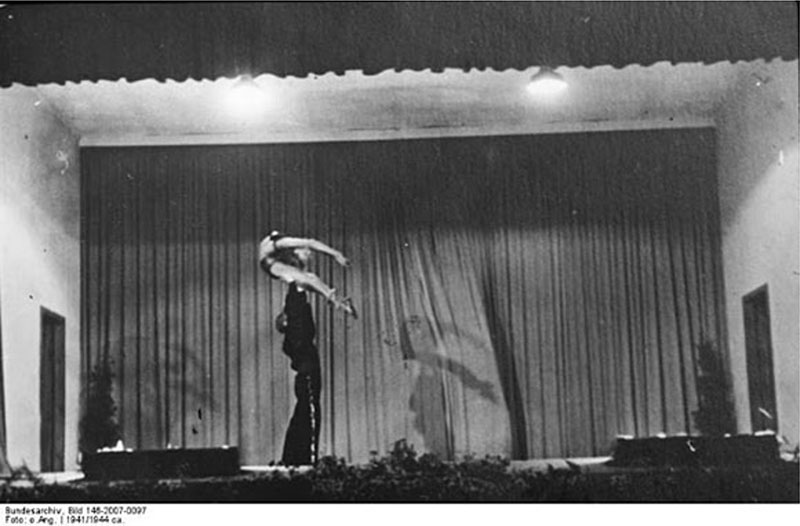
Below: A picture of the camp choir, recruited from the workers at the IG Farben factory at Auschwitz—all well-fed inmates, putting on a concert for the camp inmates.

Below: Women’s music group
Below: An inmate being X-Rayed at the Auschwitz hospital, 1942, supposedly at the height of the “extermination program.” The idea of a fully-equipped, modern and state-of-the-art hospital facility at Auschwitz flies in the face of jewish allegations that the camp’s sole purpose was to “exterminate” people.

Below: Taken from the abhorrent Yad Vashem (israel’s own “holocaust memorial organization), a photograph showing inmates at Auschwitz being treated in the ultra-modern dental clinic at the camp in 1941.

Below: It was a regular occurrence for children to be born in the camp. The Germans even set up a nursery for the children. Picture from 1942.

Below: The dining hall at Auschwitz III. Photograph from 1942.

Below: Large kitchen building

Below: Auschwitz also had its own greenhouse complex to provide food for the inmates. More below.

Below: Sporting activities were also encouraged: a fencing tournament for inmates at Auschwitz (note the sign in the background). Photograph from 1944.

There were inmates from all over the world at Auschwitz, not just filthy jews. The camp had originally been built to accommodate Polish Prisoners of War, and later had many Russian POWS arrive as well.
Below: a British POW soccer team from the E715 camp, located directly next to the Auschwitz II (Birkenau) camp—where it is claimed, the “gas chambers” were located—pose for their group photograph.

Below: Block 19, the convalescent recovery building of the infirmary complex (Blocks 19-21 and 28).


Above: A central bakery for the Auschwitz I main camp was built in 1942.
Below: The well known and beloved Auschwitz swimming pool

Below: One of the largest establishments in the overall Auschwitz complex was an agricultural and experimental station in the village of Raisko. The inmates who worked in these greenhouses (BW33c) grew vegetables and flowers and tended nearby fields. Another Raisko facility was an SS experimental station to breed plants for production of india rubber. Also located in Raisko was the SS Hygiene Institute, which conducted chemical and bacteriological analysis for disease prevention.




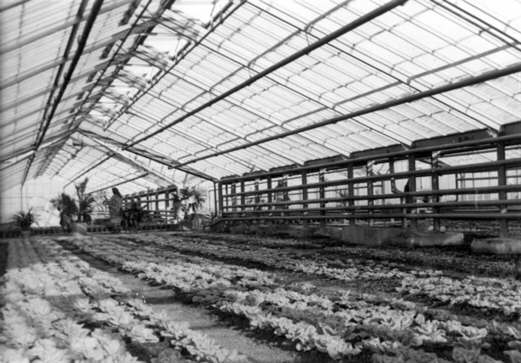

Below: A large kitchen building was provided in each of the two sections of Lager BI
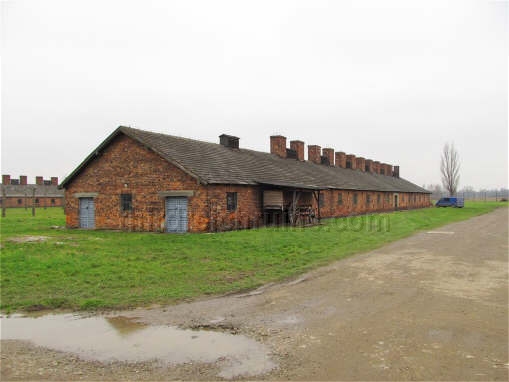
Below: The Deutsche Ausrüstungs Werke (DAW) was an SS controlled firm with several factory and workshop buildings in the Auschwitz industrial area, using [paid?] inmate labor to produce furniture and other woodwork items and woven goods.
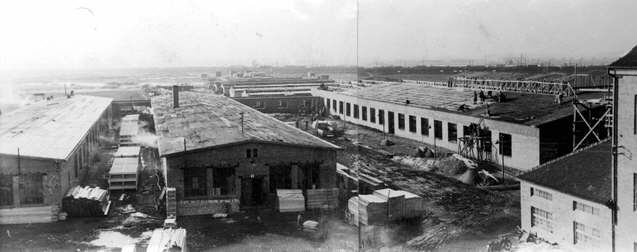
Below: Another camp kitchen building with replicated gallows that allegedly were there.

Below: In the fall and winter of 1942-43, potentially paid inmates from the Birkenau labor camp built a series of ten warehouses as storage for potatoes and vegetables, produce of the Auschwitz area farms.

Below: Inmates worked, possibly for lagergeld (camp script) in the sauna building, delousing the clothing with steam and hot air apparatus in order to save lives.



Below: Waterworks building (BW35) for the SS Kaserne complex (including the Kommandantur and SS hospital complex).

Below: At the southeast corner of the camp, outside the perimeter, were two Kartoffellagerhalle potato storage warehouses.

Below: The camp slaughterhouse and dairy facility (BW33b).

Below: Single and multiple person air raid bomb shelters around Monowitz



Below: former entrance to a multiple person air raid shelter at Monowitz


Below: Office building for the Inmate Labor Administration

Below: Several sewage treatment plants were built around the periphery of the Birkenau camp


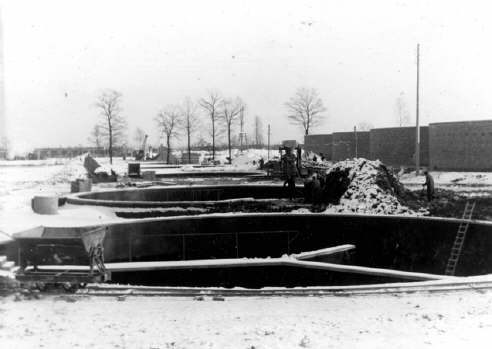

Below: The central water treatment and pumping building was located on the periphery of the Auschwitz I area.

Below: At the north end of each section of Lager BII was an ornamental garden. The structure in the distance was a large elevated water tank for the kitchen facility.

Below: Inmate kitchen building at Monowitz

Below: A Krautsilo (BW96) for storage of cabbage produce.
Below: Block 24 Auschwitz brothel
Below: Auschwitz theatre building
Below: jewish workers were compensated for their labor with scrip printed specifically for their use in stores, canteens and even brothels. This scrip was not negotiable outside of the camp for which it was issued.
Below: Canteen building (BW14) where inmates could use camp script they earned for their labor.

Below: Auschwitz Post Office
Related posts:
Views: 50
 RSS Feed
RSS Feed

















 September 19th, 2021
September 19th, 2021  Awake Goy
Awake Goy 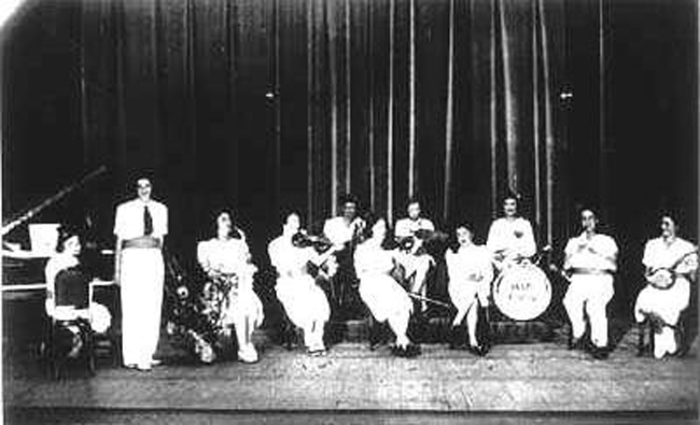








 Posted in
Posted in  Tags:
Tags: 
















